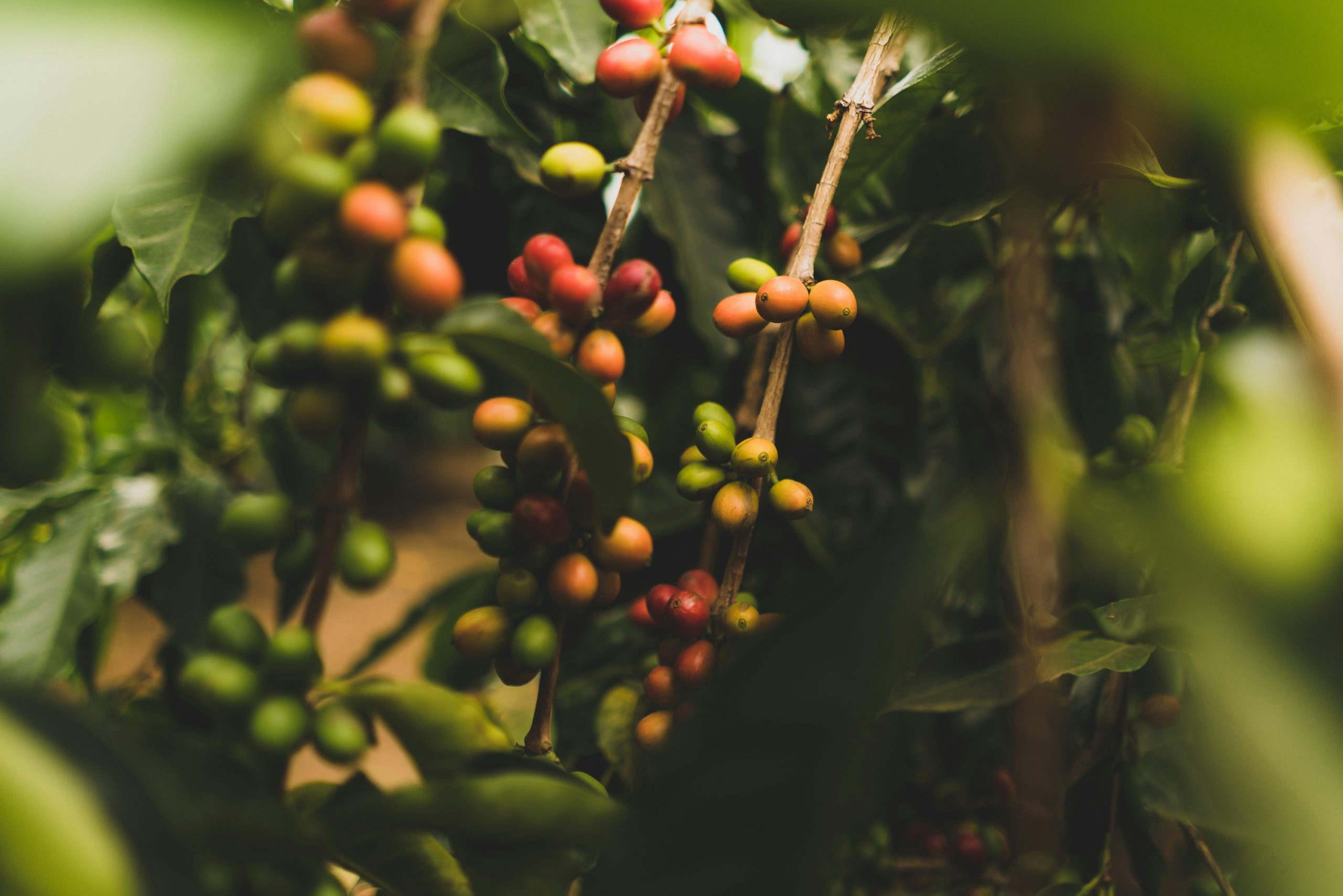Free Shipping on all U.S. orders $50+
The History of Coffee: From Goat Herders to Global Phenomenon
Discover how coffee evolved from an Ethiopian legend to the world’s second-most traded commodity, shaping cultures and economies across six continents.

Coffee is more than just a morning ritual—it’s a global phenomenon that touches nearly every corner of our planet. With over 2.25 billion cups consumed daily worldwide, coffee has become an integral part of human culture, commerce, and social interaction. But how did this humble bean transform from an Ethiopian discovery to the world’s second-most traded commodity after oil?
The Ethiopian Origins: Where Coffee History Begins
The coffee origin story traces back to ancient Ethiopia, where legend meets historical fact in the highlands of the Horn of Africa. According to Ethiopian folklore, a goat herder named Kaldi discovered coffee around 850 CE when he noticed his goats became unusually energetic after eating certain red berries from wild shrubs.
While this goat herder legend remains unverified, archaeological evidence and historical records confirm that coffee cultivation began in Ethiopia’s Kaffa region—from which the word “coffee” likely derives. Ethiopian coffee culture developed sophisticated brewing methods, including the traditional coffee ceremony that remains central to Ethiopian social life today.
Key Facts About Ethiopian Coffee History:
- Wild coffee plants (Coffea arabica) are indigenous to Ethiopian highlands
- Ethiopian monks were among the first to recognize coffee’s stimulating properties
- Traditional Ethiopian coffee ceremonies can last several hours
- Ethiopia remains one of the world’s top coffee producers, contributing 4% of global output
Coffee Spreads to Yemen: The First Commercial Cultivation
Coffee history took a crucial turn in the 15th century when Ethiopian coffee crossed the Red Sea to Yemen. Sufi mystics in Yemen embraced coffee as a tool for spiritual focus during nighttime prayers, establishing the first systematic coffee cultivation outside Ethiopia.
The port city of Mocha became the epicenter of early coffee trade, giving its name to the famous coffee variety. Yemeni coffee merchants carefully guarded their trade secrets, often boiling coffee beans before export to prevent cultivation elsewhere—a practice that ironically helped spread coffee’s popularity while maintaining their monopoly.
The Ottoman Empire: Coffee Culture Takes Root
Coffee reached the Ottoman Empire in the 16th century, where it quickly became embedded in social and political life. Istanbul’s first coffeehouse opened in 1554, creating a template for coffee culture that would spread throughout Europe and beyond.
Ottoman coffeehouses became centers of intellectual discourse, earning the nickname “schools of the wise.” However, coffee’s popularity also sparked controversy—some religious authorities banned coffee consumption, viewing coffeehouses as threats to social order and religious orthodoxy.
Ottoman Coffee Innovations:
- Development of Turkish coffee brewing methods
- Introduction of coffee as a social beverage
- Creation of the coffeehouse as a social institution
- Establishment of coffee etiquette and customs
Coffee Arrives in Europe: The Venetian Trade Revolution
European coffee history began in the 17th century through Venetian merchants who traded with the Ottoman Empire. Initially met with suspicion and dubbed “Satan’s drink” by some Christian clergy, coffee gradually gained acceptance after Pope Clement VIII reportedly blessed it.
Venice became Europe’s coffee gateway, with the first European coffeehouse opening in 1645. These establishments quickly spread throughout major European cities, becoming hubs of commerce, politics, and intellectual exchange. European coffeehouses earned various nicknames reflecting their importance: “penny universities” in England and “schools of the wise” across the continent.
European Coffee Milestones:
- 1645: First European coffeehouse opens in Venice
- 1650s: Coffee arrives in England via Oxford
- 1686: First coffeehouse opens in Paris
- 1720s: Coffee cultivation begins in European colonies
Colonial Expansion: Coffee Becomes a Global Commodity
The 18th century marked coffee’s transformation from regional beverage to global commodity through European colonial expansion. Dutch, French, British, and Spanish colonizers established coffee plantations across tropical regions, fundamentally altering coffee production and global trade patterns.
The Dutch pioneered coffee cultivation in Java and Ceylon (modern-day Sri Lanka), while the French introduced coffee to the Caribbean islands. Spanish colonizers brought coffee to Central and South America, regions that would eventually dominate global coffee production.
Major Colonial Coffee Developments:
- Dutch East Indies: Large-scale plantation system development
- French Caribbean: Introduction of coffee to Martinique and Haiti
- Brazil: Portuguese colonizers establish what becomes the world’s largest coffee industry
- Central America: Spanish influence creates coffee-based economies
The American Coffee Revolution
Coffee history in America began in the 1600s, but the beverage truly took hold following the Boston Tea Party in 1773. As tea became associated with British taxation and oppression, coffee emerged as the patriotic alternative beverage for American colonists.
The 19th century saw rapid coffee industry growth in America, driven by westward expansion, urbanization, and technological innovations. The Civil War further accelerated coffee consumption, as military rations included coffee beans for soldiers.
American Coffee Industry Milestones:
- 1901: Instant coffee patent granted to Satori Kato
- 1930s: Great Depression spurs coffee popularity as affordable luxury
- 1966: Peet’s Coffee opens in Berkeley, California
- 1971: Starbucks founded in Seattle, Washington
Industrial Revolution: Coffee Technology and Mass Production
The Industrial Revolution transformed coffee production, processing, and consumption through technological innovations that made coffee more accessible and affordable for ordinary consumers.
Key technological developments included steam-powered roasting machines, vacuum packaging, instant coffee production, and eventually espresso machines. These innovations democratized coffee consumption while maintaining quality and consistency across large-scale production.
Revolutionary Coffee Technologies:
- 1818: First coffee percolator patent
- 1884: Espresso machine invention in Italy
- 1901: Instant coffee commercialization
- 1954: First automatic drip coffee maker
Coffee in the 20th Century: Wars, Waves, and Globalization
Twentieth-century coffee history was shaped by two world wars, economic depression, and gradual globalization. During both world wars, coffee became a strategic commodity, with governments rationing supplies and soldiers relying on coffee for morale and energy.
The post-war era introduced three distinct “waves” of coffee culture:
First Wave (1940s-1960s): Mass-market coffee dominated by brands like Folgers and Maxwell House, emphasizing convenience and affordability over quality.
Second Wave (1960s-1990s): Specialty coffee emergence led by companies like Peet’s and Starbucks, focusing on origin, roasting techniques, and espresso-based beverages.
Third Wave (2000s-present): Coffee treated as artisanal craft, emphasizing single origins, brewing methods, and direct trade relationships with farmers.
The Modern Coffee Industry: Sustainability and Innovation
Today’s coffee industry faces complex challenges including climate change, fair trade practices, and sustainable farming methods. Modern coffee consumption has evolved beyond simple caffeine delivery to encompass environmental consciousness, social responsibility, and artisanal appreciation.
Contemporary coffee trends include:
- Specialty coffee growth: Single-origin beans and alternative brewing methods
- Sustainable sourcing: Fair trade and direct trade relationships
- Technology integration: Smart coffee machines and mobile ordering
- Health consciousness: Cold brew, nitro coffee, and functional additives
Current Global Coffee Statistics:
- Daily consumption: 2.25 billion cups worldwide
- Economic impact: $100+ billion annual industry
- Employment: 25 million farming families globally
- Top producers: Brazil, Vietnam, Colombia, Indonesia, Ethiopia
Coffee’s Cultural Impact: Beyond the Bean
Coffee’s influence extends far beyond agriculture and commerce into art, literature, politics, and social movements. Coffeehouses have historically served as venues for revolutionary planning, intellectual discourse, and cultural exchange.
From the Enlightenment salons of Paris to the beat poetry readings in 1950s America, coffee culture has fostered creativity and social change. Modern coffee shops continue this tradition, serving as remote offices, meeting spaces, and community gathering points.
Cultural Coffee Contributions:
- Literature: Coffeehouse literary movements and café writing culture
- Politics: Revolutionary planning in coffeehouses throughout history
- Art: Coffee as artistic medium and inspiration
- Social change: Fair trade movement and farmer empowerment
Environmental Challenges and Future Sustainability
Climate change poses significant threats to coffee production, with rising temperatures and changing precipitation patterns affecting traditional growing regions. Coffee farmers face increasing challenges from pests, diseases, and extreme weather events.
The industry responds through sustainable farming practices, climate-resistant coffee varieties, and conservation efforts. Many coffee companies now prioritize environmental stewardship alongside profit, recognizing that long-term success depends on ecological sustainability.
Sustainability Initiatives:
- Climate adaptation: Developing heat-resistant coffee varieties
- Reforestation: Shade-grown coffee supporting biodiversity
- Water conservation: Efficient processing methods reducing water usage
- Carbon neutrality: Company commitments to environmental responsibility
The Future of Coffee: Innovation and Tradition
Coffee’s future balances technological innovation with traditional cultivation methods, as the industry adapts to changing consumer preferences and environmental realities. Emerging trends include laboratory-grown coffee, alternative brewing technologies, and enhanced direct trade relationships.
Despite technological advances, coffee’s fundamental appeal remains unchanged: it brings people together, fuels productivity, and provides daily comfort to billions worldwide. From Ethiopian goat herders to modern baristas, coffee continues evolving while maintaining its essential role in human culture.
Conclusion: Coffee’s Enduring Legacy
The history of coffee reveals humanity’s remarkable ability to transform a simple agricultural product into a global phenomenon that shapes economies, cultures, and daily routines. From its legendary discovery by Ethiopian goat herders to its current status as the world’s second-most traded commodity, coffee has consistently adapted to changing times while maintaining its essential appeal.
Understanding coffee history helps us appreciate not just the beverage in our cups, but the complex global networks of farmers, traders, roasters, and consumers who make our daily coffee ritual possible. As we face future challenges around sustainability and climate change, coffee’s rich history provides valuable lessons about adaptation, innovation, and the enduring power of human connection over a shared cup.
Whether you’re enjoying a traditional Ethiopian coffee ceremony, savoring a perfectly crafted espresso, or grabbing a quick cup on your morning commute, you’re participating in a tradition that spans centuries and connects cultures across the globe. Coffee’s journey from goat herders to global phenomenon continues, with each cup representing thousands of years of human ingenuity, cultural exchange, and the simple pleasure of a perfectly brewed beverage.
Ready to explore more coffee knowledge? Subscribe to our newsletter for more coffee history insights, brewing tips, and industry updates that will deepen your appreciation for every cup.



